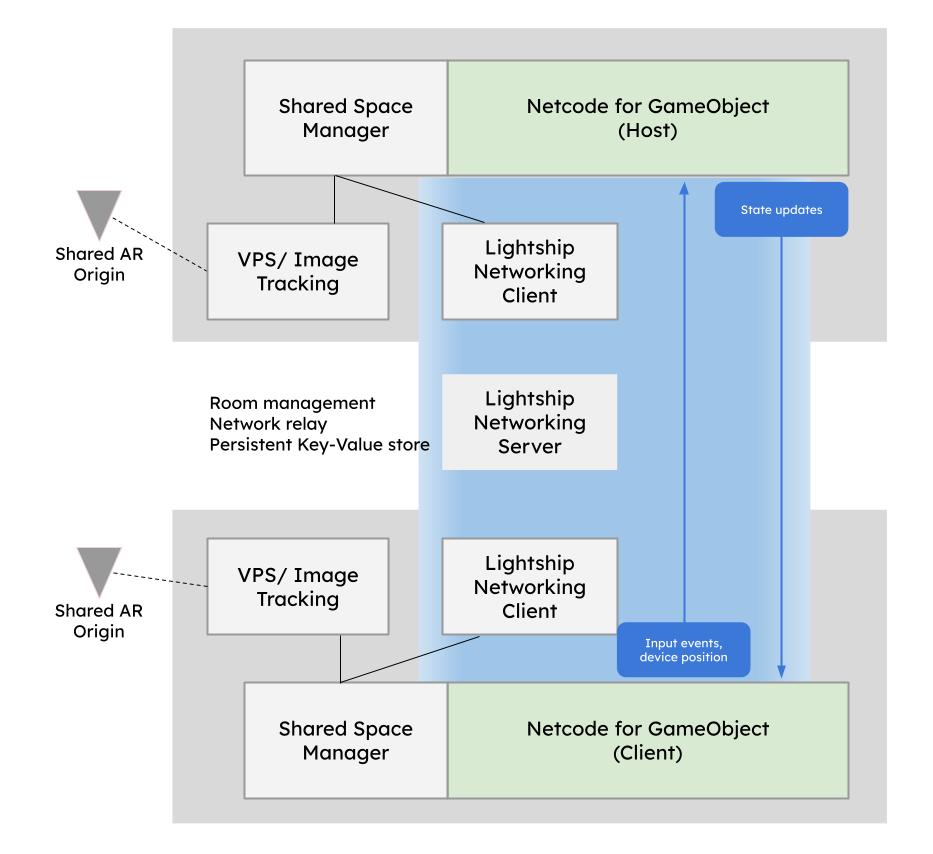Shared AR
Shared AR allows multiple users to experience the magic of AR together. With Shared AR, developers have the ability to connect multiple users in real-time. Leveraging the Unity platform, you can now use Niantic Spatial Platform's Shared AR technology in your Unity project to create multiplayer experiences, allowing people to connect and socialize within your application.
Why use Shared AR?
With Shared AR, you will be able to use these features:
- Connect multiple users (up to 10) together in a room.
- Bring players into the same room with VPS.
- Send networked messages to peers through Shared AR's relay server.
- Use Unity's Netcode for GameObjects with Shared AR.
Regional Support
Shared AR now supports regions outside North America.
Clients will automatically re-route to the best region based on their locale. Shared AR will have better round trip times (RTT) for clients in AMEA, APAC, and North America. On average, clients in AMEA and APAC should see a 100ms reduction in round trip times. Users in North America (US Central) will see the same performance as before.

For existing developers, to setup Shared AR, see How to Setup a Shared AR Scene with Netcode. To setup shared objects, see How to Display Shared Objects. To run a Shared AR sample, see Shared AR VPS. For tips on debugging Shared AR, see How to Debug Shared AR.
Shared AR uses the Shared Space Manager to manage colocalization. There are three types of colocalization can be chosen on the Shared Space Manager panel:

- VPS Colocalization uses a VPS-Activated location as the center of a shared experience. This is the default you can see in How to Use VPS Colocalization with Netcode.
- Image Tracking Colocalization uses an image in the real-world as the center of a shared experience. For more information, see How to Use Image Tracking Colocalization.
- Mock Colocalization is used to test networking in a shared experience. It is also useful for debugging between the Unity editor and a device. For more information, see How to Debug Shared AR.